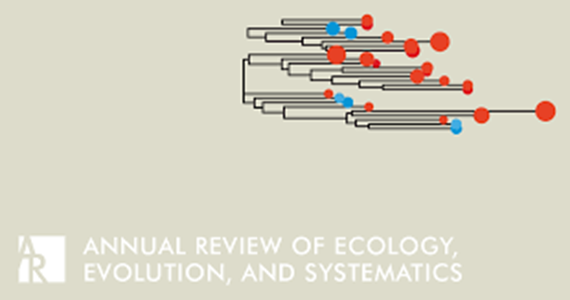枯木在碳循环中的作用:对模型、森林管理和未来气候的影响
IF 11.2
1区 生物学
Q1 ECOLOGY
Annual Review of Ecology, Evolution, and Systematics
Pub Date : 2024-08-02
DOI:10.1146/annurev-ecolsys-110421-102327
引用次数: 0
摘要
枯木是森林和稀树草原中一个重要的碳库和独特的生物多样性宝库,但直到最近才被人们所重视。枯死木碳的储存和释放受相互影响的分解驱动因素控制,包括生物消费者(动物和微生物)和非生物因素(水、火、阳光和冻融)。虽然以前的研究主要集中在森林,但我们综合了对多种木本植被生态系统的枯木研究。随着气候的变化和土地利用方式的改变,我们预计枯落物资源库的输入和输出速度会加快,但也会发生变化。目前,地球系统模型只将微生物消费者隐含为木材分解的驱动因素;我们的研究表明,许多其他因素也会影响枯木池。森林管理实践越来越认识到枯木是森林动态、生物多样性和碳预算的重要贡献者。从建模和管理中获得的新知识表明,越来越需要对枯木对碳储存和温室气体排放的贡献进行更多的研究。本文章由计算机程序翻译,如有差异,请以英文原文为准。
The Role of Deadwood in the Carbon Cycle: Implications for Models, Forest Management, and Future Climates
Deadwood represents a significant carbon pool and unique biodiversity reservoir in forests and savannas but has been largely overlooked until recently. Storage and release of carbon from deadwood is controlled by interacting decomposition drivers including biotic consumers (animals and microbes) and abiotic factors (water, fire, sunlight, and freeze–thaw). Although previous research has focused mainly on forests, we synthesize deadwood studies across diverse ecosystems with woody vegetation. As changing climates and land-use practices alter the landscape, we expect accelerating but variable rates of inputs and outputs from deadwood pools. Currently, Earth system models implicitly represent only microbial consumers as drivers of wood decomposition; we show that many other factors influence deadwood pools. Forest management practices increasingly recognize deadwood as an important contributor to forest dynamics, biodiversity, and carbon budgets. Together, emerging knowledge from modeling and management suggests a growing need for additional research on deadwood contributions to carbon storage and greenhouse gas emissions.
求助全文
通过发布文献求助,成功后即可免费获取论文全文。
去求助
来源期刊
CiteScore
19.90
自引率
1.70%
发文量
21
期刊介绍:
The Annual Review of Ecology, Evolution, and Systematics is a scholarly publication that has been in circulation since 1970. It focuses on important advancements in the areas of ecology, evolutionary biology, and systematics, with relevance to all forms of life on Earth. The journal features essay reviews that encompass various topics such as phylogeny, speciation, molecular evolution, behavior, evolutionary physiology, population dynamics, ecosystem processes, and applications in invasion biology, conservation, and environmental management. Recently, the current volume of the journal transitioned from a subscription-based model to open access through the Annual Reviews' Subscribe to Open program. Consequently, all articles published in the current volume are now available under a CC BY license.

 求助内容:
求助内容: 应助结果提醒方式:
应助结果提醒方式:


